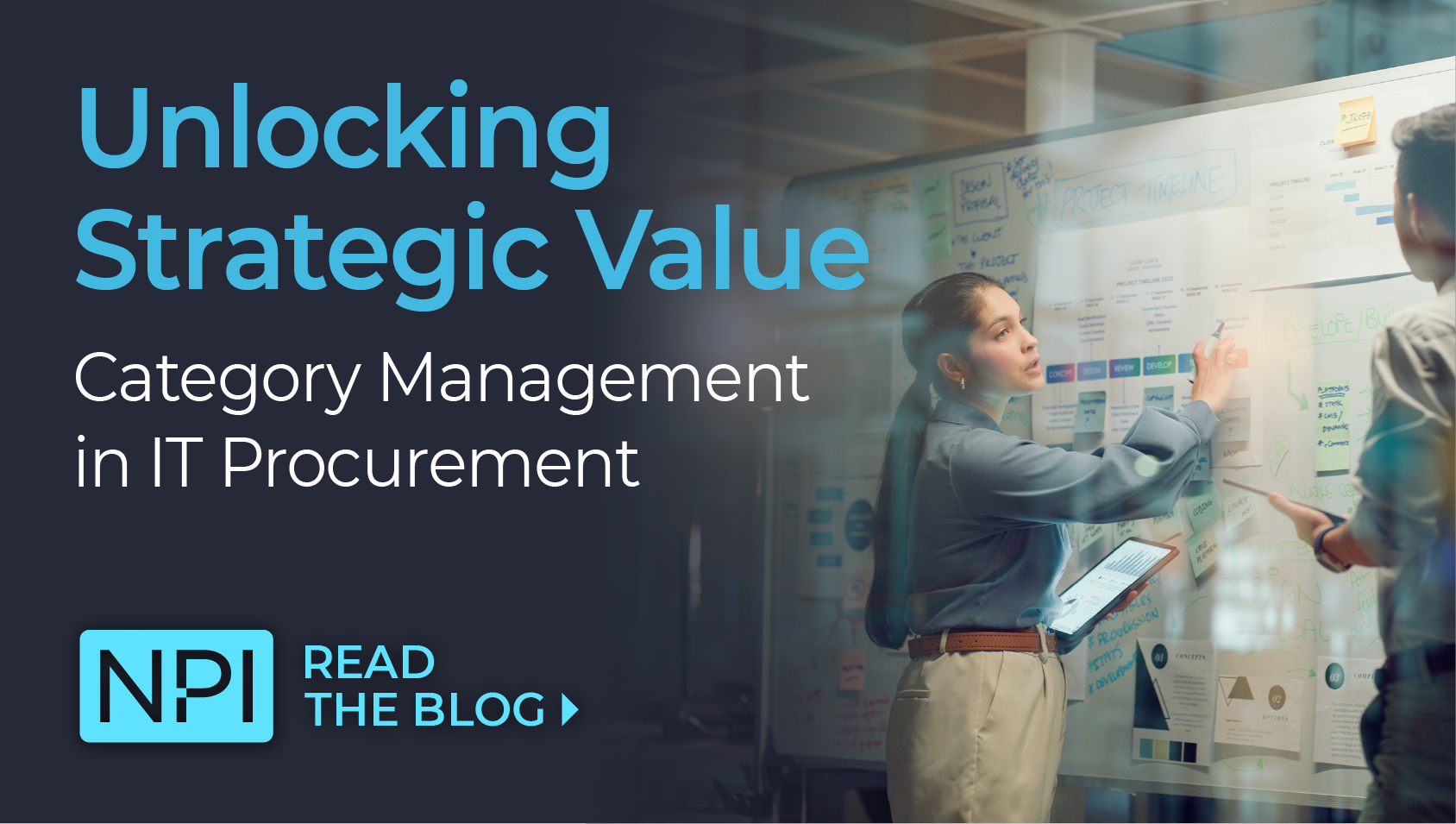BLOG
Unlocking Strategic Value: Category Management in IT Procurement
IT procurement teams are constantly juggling competing priorities, from managing a portfolio of upcoming contract renewals, to supporting urgent tech rollouts, to navigating unpredictable last-minute purchases made across different business units. For many of our clients, this complexity has made effective category management not just valuable, but essential. It provides the structure, visibility, and strategic control needed to drive smarter technology buying decisions.
The Current State of Category Management in IT Sourcing
Category management is a strategic approach to managing cohorts of related IT spend. The most common example of this strategy in practice is organizing technology spend into logical categories – such as software, infrastructure, and services. While this segmentation may seem simple, it creates a powerful foundation for strategic decision-making.
However, despite its strategic value, many procurement teams (even within larger enterprise IT sourcing organizations) struggle to implement category management effectively.
In conversations with several industry-leading clients, we explored their approaches to effective category management and what they consider to be best-in-class practices. Below, we’ve outlined the key insights and takeaways from those discussions.
Establishing Clarity and Defining Scope
Being able to clearly define the category and its scope is a critical first step in effective category management. Technology purchases involve multiple stakeholders beyond Procurement (such as IT, Finance, Sales, and Marketing) making alignment across departments essential. By establishing clear category definitions organizations can:
- Reduce ambiguity by clearly defining category scope and responsibilities
- Enable smoother cross-functional collaboration
- Mitigate bottlenecks that arise from overlapping responsibilities or unclear ownership
This clarity also lays the groundwork for stronger stakeholder alignment.
Beyond the multiple areas of the business that IT products impact, the solutions themselves often span several categories. For instance, Microsoft offers a broad suite of solutions including productivity software (Microsoft 365), cloud infrastructure (Azure), collaboration tools (Teams, which is now overlapping with telecom), and security services, each of which could fall into separate spend categories like software, cloud services, and cybersecurity.
Without clear category definitions, spend management can quickly become fragmented and ineffective. This is where a strong taxonomy becomes critical, providing a consistent structure for classifying IT products and improving visibility across the organization.
Leveraging Accurate Data
Another area that our peers agreed is vital to a successful category management strategy is data accuracy and having a clear view into spending. Without a reliable view of current and historical spend, it's nearly impossible to identify trends, assess vendor performance, or uncover areas for consolidation and cost savings.
In IT specifically, spend is often split across departments or embedded in larger technology projects, making it difficult to track. A centralized, accurate view enables procurement teams to make more informed decisions about sourcing, budgeting, and long-term planning.
When stakeholders have access to clear data, it becomes easier to build trust, align on priorities, and present a compelling case for strategic initiatives. Accurate reporting can reveal duplicate tools, underutilized licenses, or shadow IT – all underlying initiatives for incorporating category management. One of our clients commented “accurate data doesn’t just support category strategy; it drives it.”
Ensuring Accountability Through Governance
Even the most well-defined category management plan will fall short without strong governance to enforce it. That’s why some of our clients have found success in establishing a governance board as a part of their process.
The governance board plays a critical role in reviewing and approving new spend, ensuring that any proposed investments align with agreed-upon strategies, preferred suppliers, and are within budget. It acts as a gatekeeper to vet net new spend, challenge the business case, and hold stakeholders accountable.
An Evolving Process
The value of category management in IT procurement is clear. By shifting from a reactive purchasing process to a
proactive strategy you can more easily optimize costs, performance and risk.


